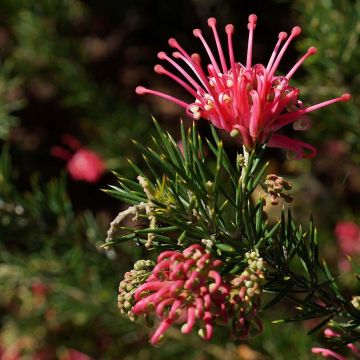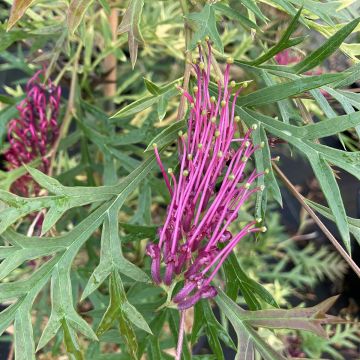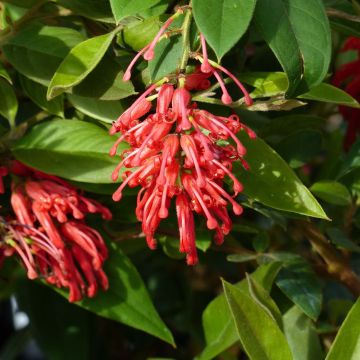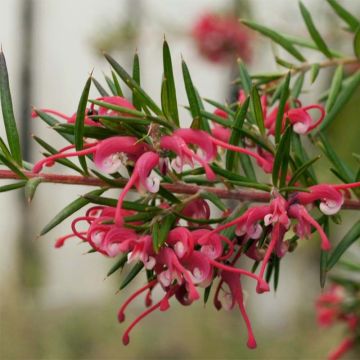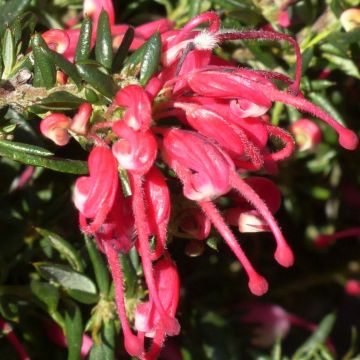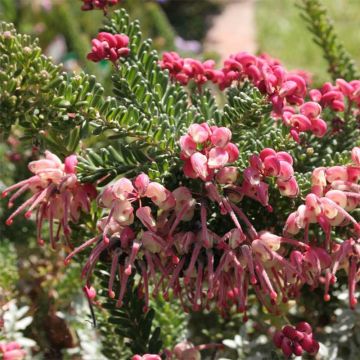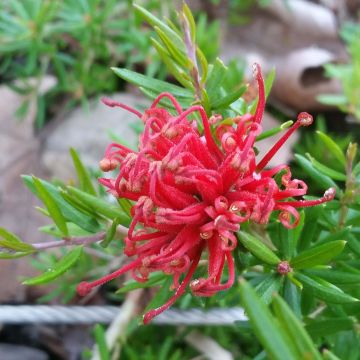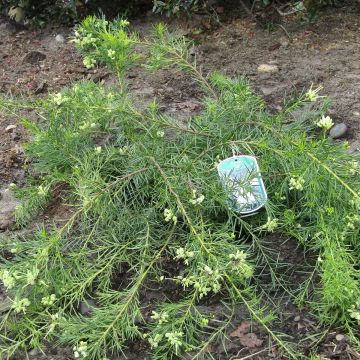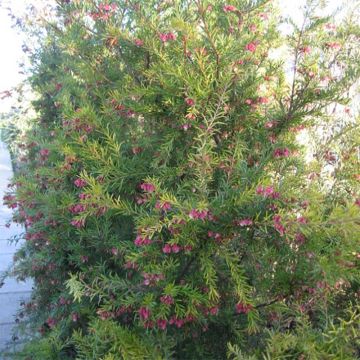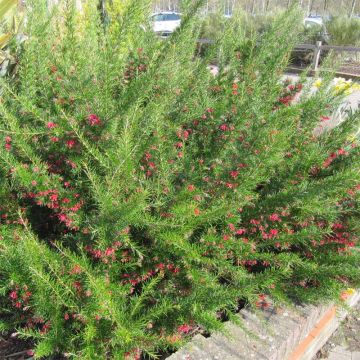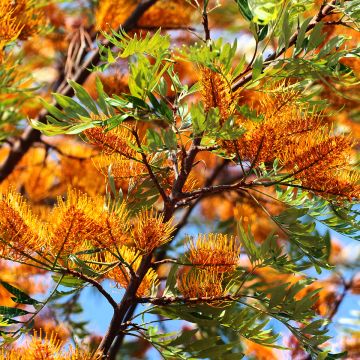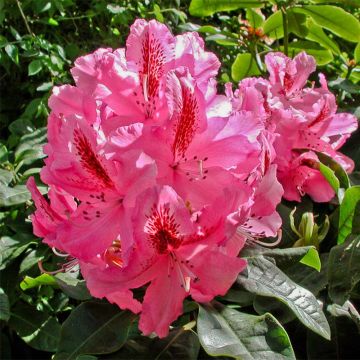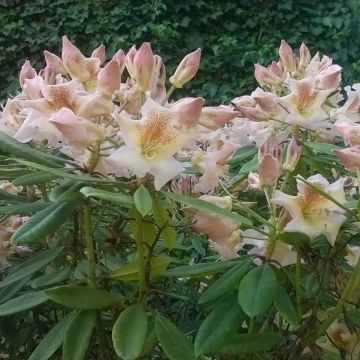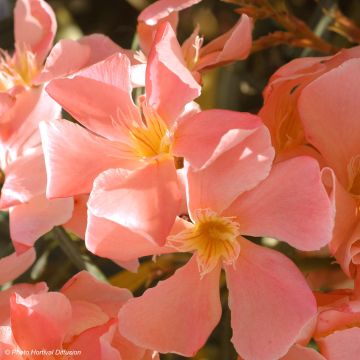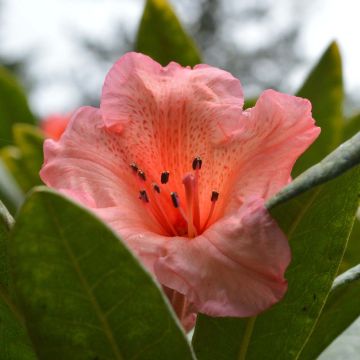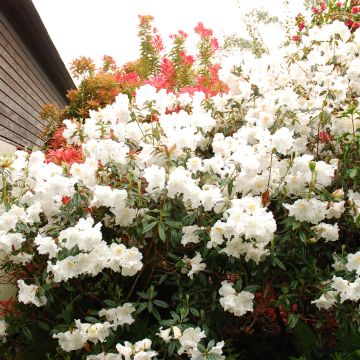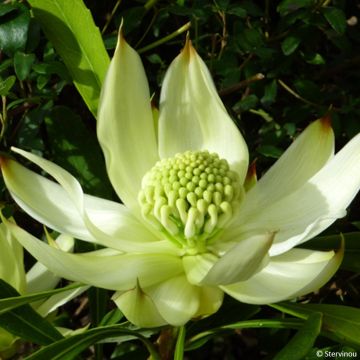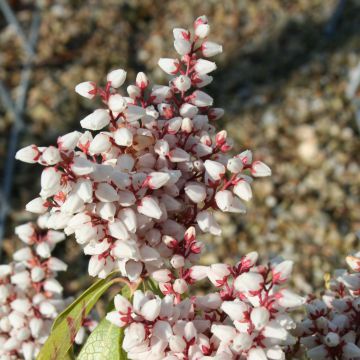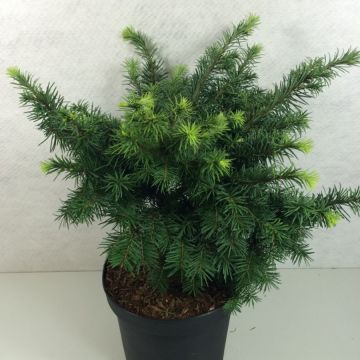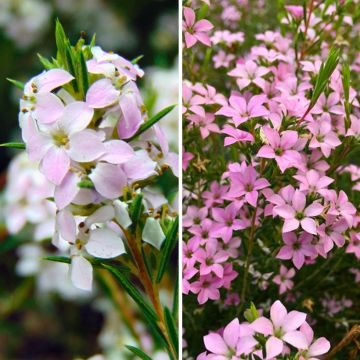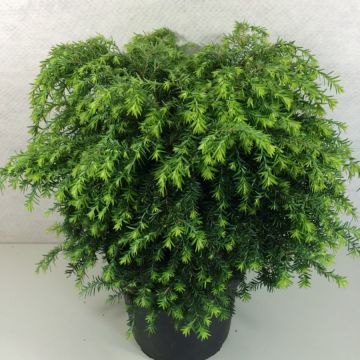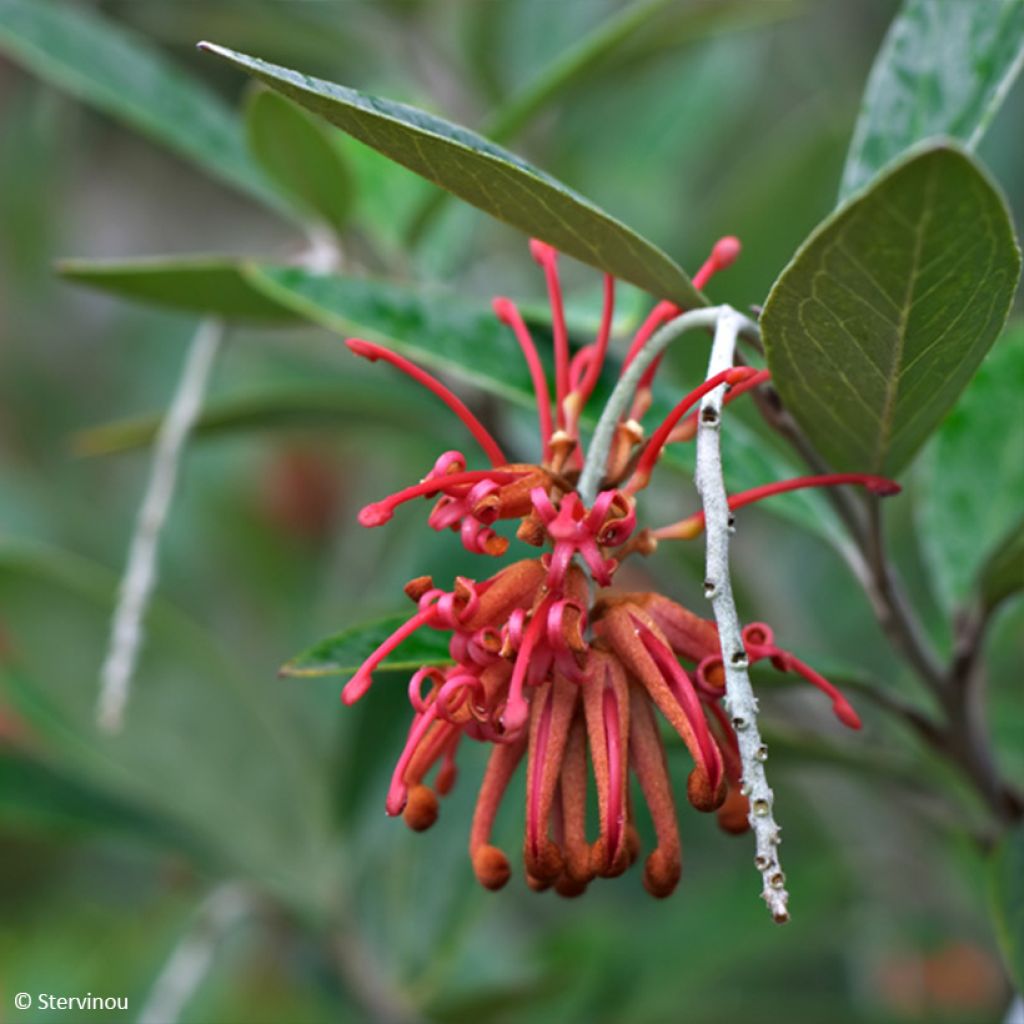

Grevillea victoriae
Grevillea victoriae
Grevillea victoriae
Royal grevillea, Mountain grevillea
Why not try an alternative variety in stock?
View all →This plant carries a 24 months recovery warranty
More information
We guarantee the quality of our plants for a full growing cycle, and will replace at our expense any plant that fails to recover under normal climatic and planting conditions.
From €5.90 for pickup delivery and €6.90 for home delivery
Express home delivery from €8.90.
Does this plant fit my garden?
Set up your Plantfit profile →
Description
Grevillea victoriae, also called Victoria Grevillea or Royal Grevillea, is a botanic species interesting for its hardiness and long-lasting red flowering. This beautiful shrub native to the mountainous regions of southeastern Australia is characterised by a naturally rounded habit, flexible branches, and relatively large leaves for a Grevillea. It has beautiful green foliage with grey highlights, which remains evergreen in winter. This species prefers a non-calcareous soil that is not too dry.
Grevillea victoriae is a tree of the Proteaceae family. In Australia, it is found in the mountains of New South Wales. It forms a medium-sized bush with a habit that is both rounded and upright. Depending on the growing conditions, it can reach a height of 2m with a similar spread. Its branches are more or less spreading to ascending, or even slightly trailing. The leaves are elliptical to lanceolate in shape, or even broadly ovate, pointed or rounded. They measure 6 to 12 cm in length. The leaf is smooth and dark green with a bluish tint on the upper side, while the silky undersides are silver-grey. They are decorative all year round in mild climates, but can be damaged by frost from -5 or -6°C onwards. A well-established specimen can withstand brief frosts of around -9 to -10°C in very well-drained soil. The flowering is abundant in November and can continue for several months, or even all year round in mild, not too dry climates. The flowers, grouped in pendulous, conical and loose clusters, appear at the ends of the branches or in the axils of the leaves. They are tubular, measuring 2.5 cm in length, and bright red.
Grevillea victoriae can be used as a hedge or as a solitary specimen in coastal gardens. In a large exotic bed, it can be planted alongside other Australian plants such as Callistemons, a Melaleuca gibbosa, or Leptospermum 'Silver Sheen'. As a hedge, it can be accompanied by 'Olearia virgata or the tall Escallonia Iveyi with white flowers, for example.
Report an error about the product description
Plant habit
Flowering
Foliage
Botanical data
Grevillea
victoriae
Proteaceae
Royal grevillea, Mountain grevillea
Australia
Other Grevillea
Planting and care
Grevillea victoriae is best planted in spring, after the last frosts. It is a relatively hardy species, a well-established subject that can survive brief frosts of around -9 °C in very well-drained soil. It requires soil with an acidic to neutral pH, sandy, gritty, and not retaining too much water. This species tolerates moderate drought.
Choose a sunny location, relatively sheltered from the wind. Dig a large hole (70 or 80 cm on each side and in depth) and add planting compost (pH around 6) mixed with the existing soil. Water regularly for the first two years until the young plant is well rooted. After that, it will only require occasional watering in a prolonged drought.
Planting period
Intended location
Care
This item has not been reviewed yet - be the first to leave a review about it.
Evergreen shrubs
Haven't found what you were looking for?
Hardiness is the lowest winter temperature a plant can endure without suffering serious damage or even dying. However, hardiness is affected by location (a sheltered area, such as a patio), protection (winter cover) and soil type (hardiness is improved by well-drained soil).

Photo Sharing Terms & Conditions
In order to encourage gardeners to interact and share their experiences, Promesse de fleurs offers various media enabling content to be uploaded onto its Site - in particular via the ‘Photo sharing’ module.
The User agrees to refrain from:
- Posting any content that is illegal, prejudicial, insulting, racist, inciteful to hatred, revisionist, contrary to public decency, that infringes on privacy or on the privacy rights of third parties, in particular the publicity rights of persons and goods, intellectual property rights, or the right to privacy.
- Submitting content on behalf of a third party;
- Impersonate the identity of a third party and/or publish any personal information about a third party;
In general, the User undertakes to refrain from any unethical behaviour.
All Content (in particular text, comments, files, images, photos, videos, creative works, etc.), which may be subject to property or intellectual property rights, image or other private rights, shall remain the property of the User, subject to the limited rights granted by the terms of the licence granted by Promesse de fleurs as stated below. Users are at liberty to publish or not to publish such Content on the Site, notably via the ‘Photo Sharing’ facility, and accept that this Content shall be made public and freely accessible, notably on the Internet.
Users further acknowledge, undertake to have ,and guarantee that they hold all necessary rights and permissions to publish such material on the Site, in particular with regard to the legislation in force pertaining to any privacy, property, intellectual property, image, or contractual rights, or rights of any other nature. By publishing such Content on the Site, Users acknowledge accepting full liability as publishers of the Content within the meaning of the law, and grant Promesse de fleurs, free of charge, an inclusive, worldwide licence for the said Content for the entire duration of its publication, including all reproduction, representation, up/downloading, displaying, performing, transmission, and storage rights.
Users also grant permission for their name to be linked to the Content and accept that this link may not always be made available.
By engaging in posting material, Users consent to their Content becoming automatically accessible on the Internet, in particular on other sites and/or blogs and/or web pages of the Promesse de fleurs site, including in particular social pages and the Promesse de fleurs catalogue.
Users may secure the removal of entrusted content free of charge by issuing a simple request via our contact form.
The flowering period indicated on our website applies to countries and regions located in USDA zone 8 (France, the United Kingdom, Ireland, the Netherlands, etc.)
It will vary according to where you live:
- In zones 9 to 10 (Italy, Spain, Greece, etc.), flowering will occur about 2 to 4 weeks earlier.
- In zones 6 to 7 (Germany, Poland, Slovenia, and lower mountainous regions), flowering will be delayed by 2 to 3 weeks.
- In zone 5 (Central Europe, Scandinavia), blooming will be delayed by 3 to 5 weeks.
In temperate climates, pruning of spring-flowering shrubs (forsythia, spireas, etc.) should be done just after flowering.
Pruning of summer-flowering shrubs (Indian Lilac, Perovskia, etc.) can be done in winter or spring.
In cold regions as well as with frost-sensitive plants, avoid pruning too early when severe frosts may still occur.
The planting period indicated on our website applies to countries and regions located in USDA zone 8 (France, United Kingdom, Ireland, Netherlands).
It will vary according to where you live:
- In Mediterranean zones (Marseille, Madrid, Milan, etc.), autumn and winter are the best planting periods.
- In continental zones (Strasbourg, Munich, Vienna, etc.), delay planting by 2 to 3 weeks in spring and bring it forward by 2 to 4 weeks in autumn.
- In mountainous regions (the Alps, Pyrenees, Carpathians, etc.), it is best to plant in late spring (May-June) or late summer (August-September).
The harvesting period indicated on our website applies to countries and regions in USDA zone 8 (France, England, Ireland, the Netherlands).
In colder areas (Scandinavia, Poland, Austria...) fruit and vegetable harvests are likely to be delayed by 3-4 weeks.
In warmer areas (Italy, Spain, Greece, etc.), harvesting will probably take place earlier, depending on weather conditions.
The sowing periods indicated on our website apply to countries and regions within USDA Zone 8 (France, UK, Ireland, Netherlands).
In colder areas (Scandinavia, Poland, Austria...), delay any outdoor sowing by 3-4 weeks, or sow under glass.
In warmer climes (Italy, Spain, Greece, etc.), bring outdoor sowing forward by a few weeks.

































